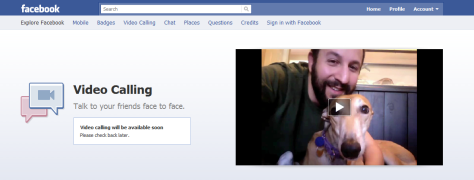All media must evolve to stay relevant in our lives. We’re seeing it now on four levels: news, communication, commerce and entertainment.
The way we get our news is changing, from print to web and apps. We communicate and interact daily on Facebook and text messages. We shop online more than ever before. We’re entertained not by video-rental stores but by Netflix and Hulu. The radio dial we used to turn is now a digital dial.
Shifts in consumer behavior force media to evolve. Today that shift is toward personalization.
Pandora, the leading Internet radio service, is the evolution of FM radio. Its customized radio plays songs it knows we’ll like – it learns our tastes – using Pandora’s Music Genome Project.

Editor’s Note: This article first appeared on StateCollege.com in Tech Talk, a biweekly column by Eric Zimmett. Click here to view the original column.
Pandora announced Tuesday at the International CTIA Wireless 2012 conference in New Orleans that it has surpassed 150 million registered users, nearly 52 million of which are active listeners. It is now one of the most-used online services in the United States.
In April, Pandora users clocked 1.06 billion listening hours, an 87 percent increase over the same time last year.
Audience measurement and consumer research company The Media Audit revealed last week that Pandora is the No. 1 listened to station in Los Angeles, beating out KIIS-FM.
The Media Audit found that Internet radio has reached 20 percent saturation; which means there’s still plenty of room to grow. Among 18 to 34 year olds, the saturation – or market presence – hits 36.6 percent.
Ways to Tune In: some of today’s popular destinations for music
- Pandora: Personalized Internet radio service that creates stations based on your favorite artists and songs. Pandora offers free and premium Pandora One, which features ad-free listening for about $3 per month.
- Sirius XM: Subscription satellite radio service starting at $14.49 per month featuring more than 140 channels including 71 commercial-free music channels plus news, talk, sports and more. You’ll need a Sirius or XM radio to use the service, unless you opt for an online-only subscription for about $13 per month. Sirius XM is also available in select vehicle models.
- Spotify: On-demand music. Enter an artist and play the tracks you want to hear. Spotify also features genre-specific stations and the new Playlist Radio. Free on desktop or laptop computers – but to play on mobile devices or tablets Spotify Premium ($9.99 per month) is required.
- Slacker: Slacker plays songs based on your favorite artists or tracks, in addition to genre-specific stations. Slacker has a free level and two premium options: Slacker Plus ($3.99 per month) and Slacker Premium ($9.99 per month), with Slacker Premium featuring on-demand music like Spotify.
- Songza: Songza sets itself apart with its Music Concierge featuring situation-based music, from Waking Up, to Unwinding After a Long Day, or even A Sweaty Dance Party.
- Others: Grooveshark, Rdio, MOG, Rhapsody
According to the annual Infinite Dial study released last month by Arbitron and Edison Research, weekly Internet radio listening jumped more than 30 percent in the past year. The study includes streaming AM and FM stations.
Pandora listeners hit 22 percent of people 12 years and older who’ve listened in the past month, up from 16 percent last year, according to the same study.
New car tech is catching up, too. Including “Infotainment” systems that connect to Internet radio services like Pandora and satellite radio service Sirius XM. Pandora is available in 48 vehicle models across 18 brands and an array of aftermarket multimedia systems.
Cars with built-in iPod sync and audio jacks enable a driver to either wirelessly sync a device or plug it in, playing the audio through the car’s stereo system.
More than 70 percent of Pandora’s listening hours were from a device other than the computer, the company announced Tuesday. This correlates with the growing number of mobile devices and users accessing the Internet – and Internet radio – away from the computer.
In the past two years, smartphone ownership has tripled. The percentage of people who’ve listened to Internet radio by connecting a mobile device to the car stereo has experienced a 50 percent increase in the past 12 months, reaching 17 percent, according to Arbitron and Edison Research.
More than half of users between 18 and 24 years old have listened to an iPod or mp3 player in the car as their main source of music. One in five is streaming Pandora, according to a separate study by Arbitron and Edison Research.
In-car listening is the biggest area of potential growth for Internet radio services. In the next five years, Internet radio will gain more ground in the car. It’s only a matter of time before the technology hits the streets and moves along the adoption curve.
Turning the dial
Like television and newspapers, radio is evolving by adapting to shifts in the way we live – and listen.
The consumer’s desire for personalized media is driving the shift. We’re responsible for the changes that are occurring. It’s happening because we asked for it. Companies like Pandora and Spotify exist because they noticed it before the others, maybe even before we noticed it.
Consumers told them what they wanted; and they were listening. They responded with services that are transforming the radio landscape.
“Mobile connectivity has allowed us to deliver on our mission of providing people with music they love…” said Pandora President and Chief Executive Officer Joe Kennedy.
“The continued growth of Pandora shows that personalized radio is fundamentally changing the way people listen to music.”


































 But don’t let all that buzz fool you. Though the Internet radio services are getting the press, conventional radio is alive and well — still the most used audio platform among consumers.
But don’t let all that buzz fool you. Though the Internet radio services are getting the press, conventional radio is alive and well — still the most used audio platform among consumers.


